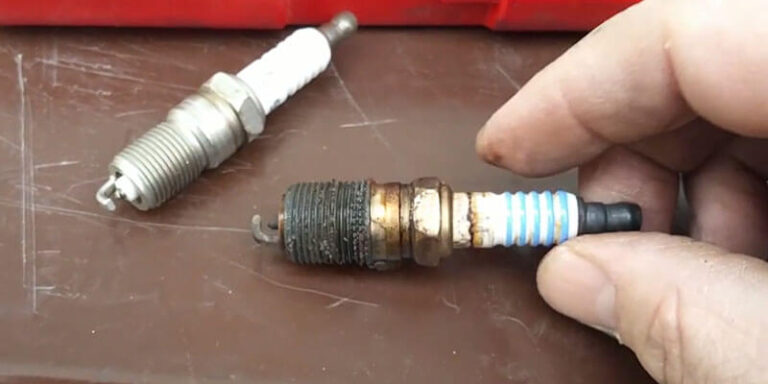
How Long Should You Let Your Engine Cool Before Changing Spark Plugs?
As a seasoned DIY auto enthusiast, I have encountered countless scenarios where a simple yet crucial task, like changing spark plugs, could turn into a frustrating ordeal if not executed properly. One of the most common questions I often ponder upon is regarding the optimal time to allow an engine to cool before embarking on this task.
In this comprehensive guide, we will delve into the intricacies of spark plug replacement, exploring the ideal cooling time, potential risks associated with premature removal, and expert advice to ensure a seamless and effective experience. By the end of this article, you will be equipped with the knowledge and confidence to tackle this maintenance task with precision and safety.
The Significance of Engine Cool-Down Time
When an engine operates, the combustion process generates immense heat, which transfers to various components, including spark plugs. These plugs, responsible for igniting the air-fuel mixture within the cylinders, are designed to withstand extreme temperatures. However, their contact with the scorching exhaust gases can cause them to reach temperatures well over 500 degrees Celsius.
The excessive heat retained by spark plugs necessitates a cool-down period before attempting to remove them. If removed prematurely, the sudden temperature change can induce thermal shock, causing the spark plug body to crack or shatter within the cylinder head.
Optimal Engine Cooling Time
The recommended cooling time for an engine before changing spark plugs varies depending on the vehicle type and specific engine design. As a general rule of thumb, it’s advisable to wait at least 30 minutes after turning off the engine. This duration allows ample time for the majority of the heat to dissipate, reducing the risk of thermal shock.
For older vehicles or engines with higher performance, extending the cooling period to 45-60 minutes or even longer may be beneficial. This additional cooling time provides an increased margin of safety, minimizing the possibility of any complications during spark plug removal.
Consequences of Removing Spark Plugs Too Soon
Attempting to remove spark plugs from a hot engine can lead to several detrimental consequences, including:
- Thermal Shock: Exposing hot spark plugs to a sudden temperature change can cause their bodies to crack or shatter. This can lead to fragments falling into the cylinder, potentially damaging the piston, valves, or cylinder walls.
- Stripped Threads: The aluminum cylinder head is prone to thread damage if excessive force is applied while removing hot spark plugs. This can make it difficult or impossible to reinstall the spark plugs securely.
- Carbon Buildup: Removing spark plugs from a hot engine can dislodge carbon deposits that have accumulated around them. This carbon can interfere with the proper sealing of the new spark plugs, potentially leading to ignition problems.
Expert Tips and Advice
To ensure a successful and trouble-free spark plug replacement, consider the following expert tips:
- Use a Torque Wrench: When tightening the new spark plugs, it’s essential to use a torque wrench to apply the specified torque recommended by the vehicle manufacturer. Overtightening can damage the spark plugs or strip the threads in the cylinder head.
- Apply Anti-Seize Compound: Apply a small amount of anti-seize compound to the threads of the new spark plugs before installing them. This will prevent them from seizing in the cylinder head, making future removals easier.
- Check Spark Plug Gap: Before installing the new spark plugs, ensure that the gap between the electrodes is set to the manufacturer’s specifications. A proper gap is crucial for optimal ignition.
Frequently Asked Questions
Here are some commonly asked questions regarding spark plug replacement and cooling time:
Q: Can I change spark plugs with the engine cold?
A: Yes, changing spark plugs with the engine cold is generally safe. However, allowing the engine to cool for at least 30 minutes before starting the task is highly recommended.
Q: What are the signs that spark plugs need to be replaced?
A: Some common signs indicating the need for spark plug replacement include: difficulty starting the engine, reduced engine performance, increased fuel consumption, and rough idling.
Q: How often should I change spark plugs?
A: The frequency of spark plug replacement varies depending on the vehicle and the type of spark plugs used. Refer to your vehicle’s owner’s manual for the recommended replacement interval.
Conclusion
Changing spark plugs is a crucial maintenance task for ensuring optimal engine performance. By allowing the engine to cool sufficiently before attempting to remove the spark plugs, you can avoid potential complications such as thermal shock and stripped threads. Remember to follow the expert tips and advice provided in this article to ensure a smooth and successful replacement process.
If you are interested in learning more about automotive maintenance, I encourage you to explore my blog for a wealth of informative and practical articles. By staying informed and applying these principles to your vehicle, you can enjoy a safe and reliable driving experience for years to come.

Source Image: www.readersdigest.ca

Source Image: www.readersdigest.ca

Source Image: www.readersdigest.ca
Grateful for your spirited interest in this read. How Long To Let Engine Cool Before Changing Spark Plugs, provides valuable knowledge to deepen your understanding.